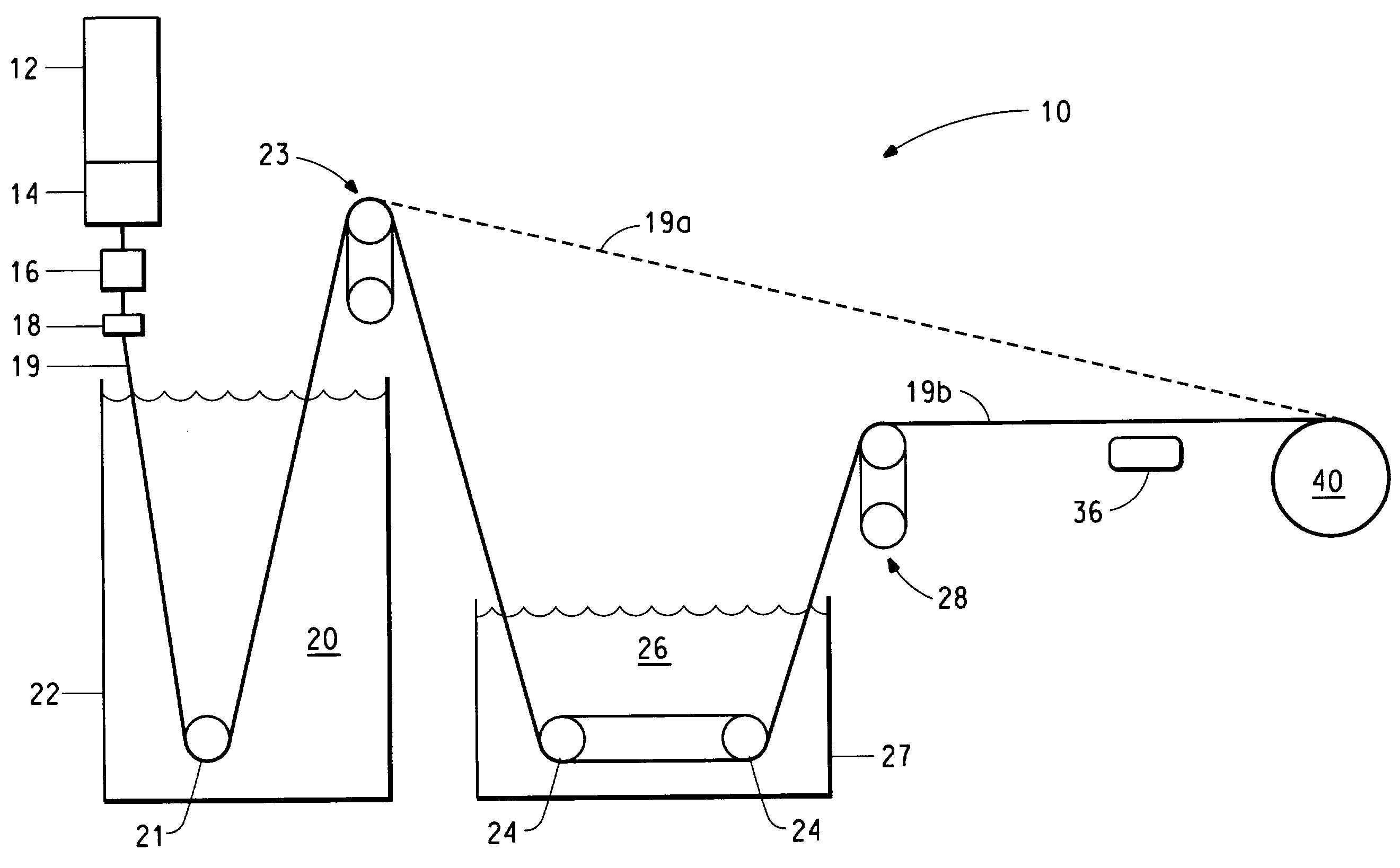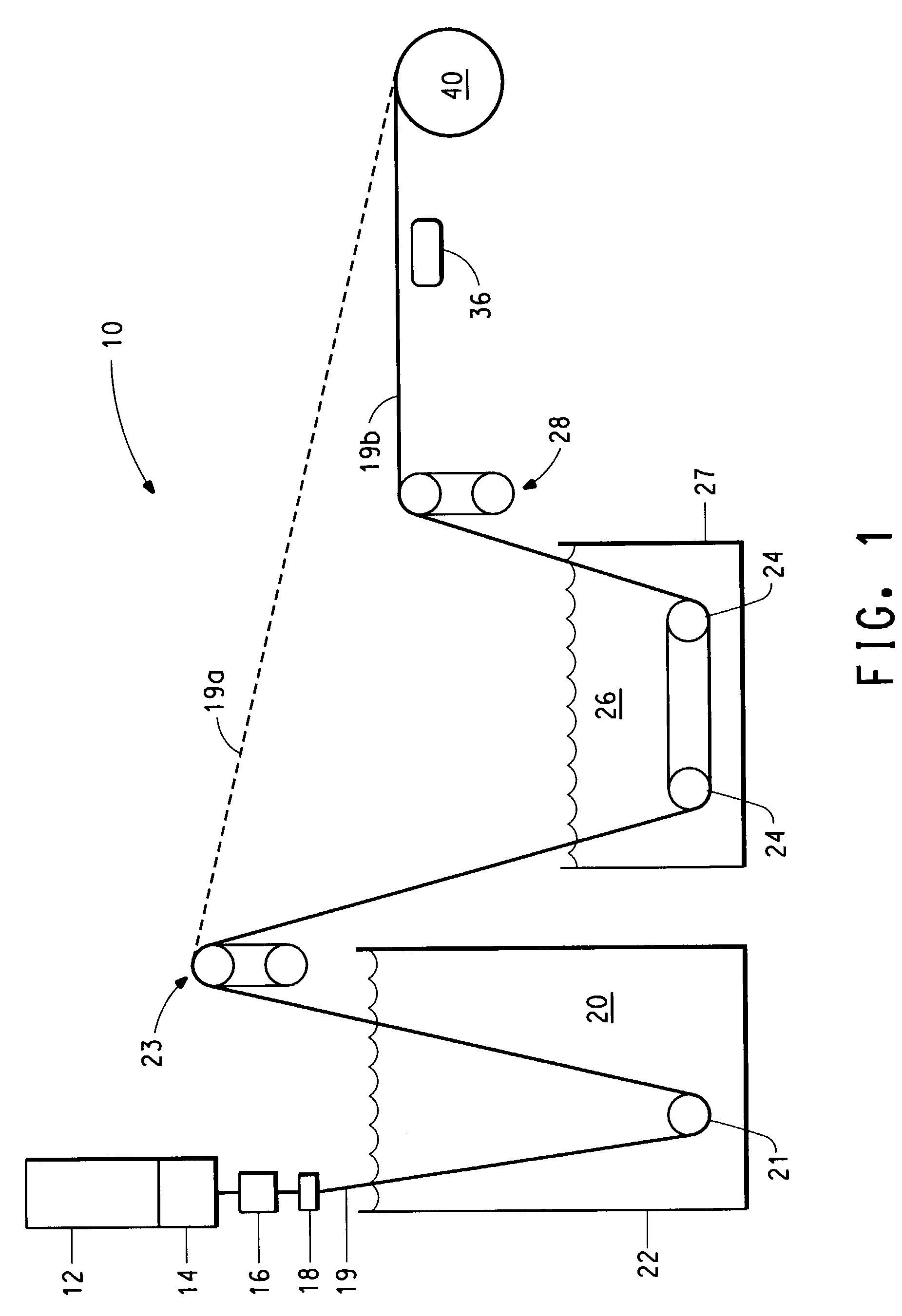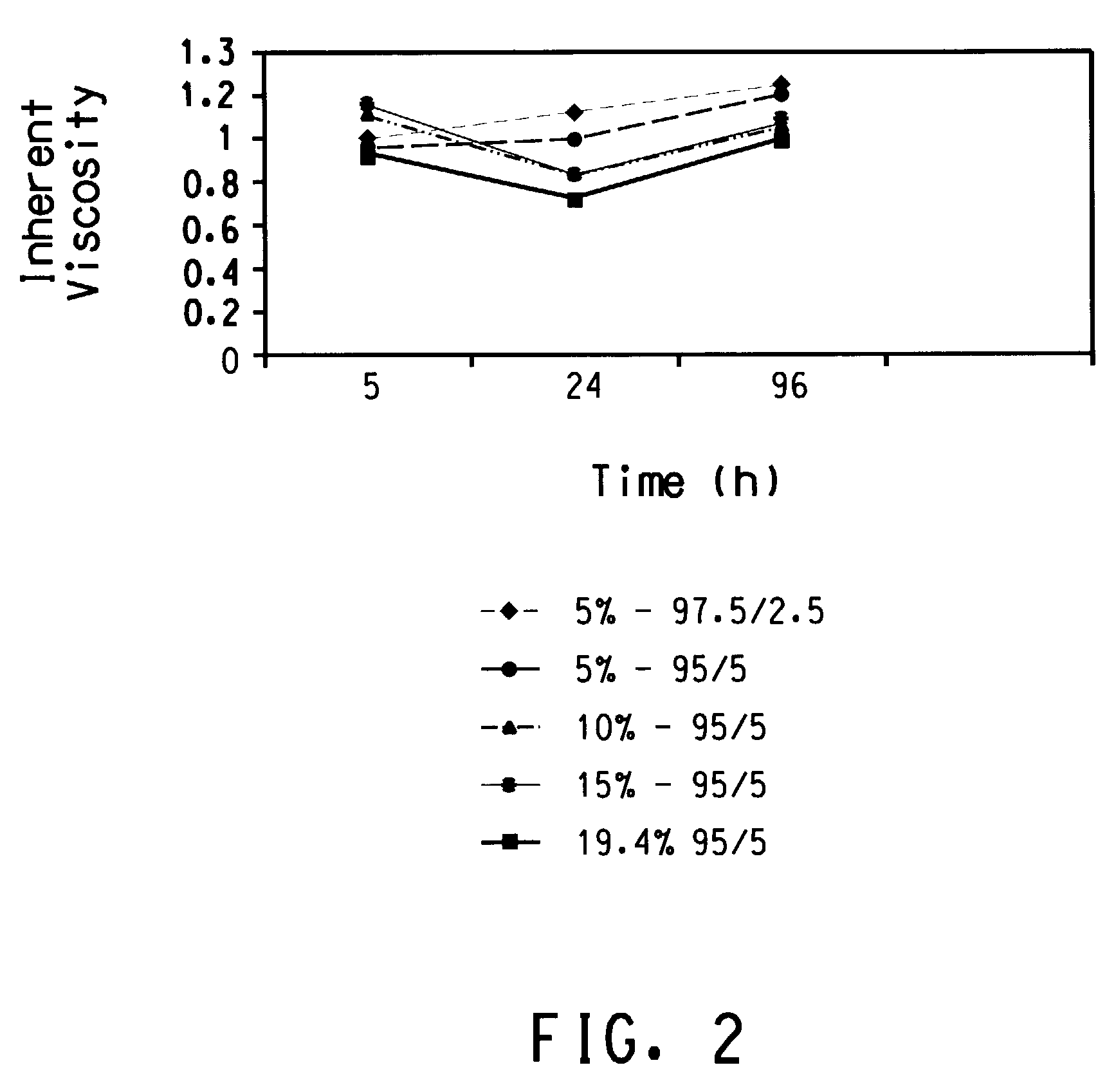Process of making polypeptide fibers
a technology of polypeptide fibers and fibers, which is applied in the direction of monocomponent polypeptide artificial filaments, monocomponent protein artificial filaments, peptide/protein ingredients, etc., can solve the problems of not attractive spinning solvents and the inability to achieve mechanical properties of as-spun fibers that are useful in textile and apparel applications
- Summary
- Abstract
- Description
- Claims
- Application Information
AI Technical Summary
Problems solved by technology
Method used
Image
Examples
example 1
Solution Preparation and Extrusion from 99.6% Formic Acid at 14.2% Solids
[0051]D-silk (2 g) was dissolved in formic acid (18 g, 99.6%) to yield a solution of 5% solids. The resulting solution was first filtered through a 325-mesh stainless steel screen and then concentrated to 14.2% solids on a vacuum line by vacuum distillation of formic acid at or below room temperature. Careful stirring was maintained to assure good dope uniformity throughout the concentrating step. The clear, viscous solution was transferred into a 10 cc polyethylene syringe fitted with an 10 um stainless steel filter, a single hole, 0.127 mm diameter×0.254 mm capillary length spinneret. The fiber was wet extruded at 6.4 m / min into a coagulation bath consisting of 75 / 25-v / v methanol / H2O at 27° C. The extrudate traversed 45.7 cm in coagulation bath 1 and was subsequently collected on a 3.8-cm diameter stainless steel bobbin at a speed of 55.8 meters per minute. The fiber guides were kept wet with methanol through...
example 2
Solution Preparation and Extrusion from Formic Acid / H2O at 21.0% Solids
[0052]D-silk (3 g) was dissolved in formic acid / water (97.5 / 2.5 W / W, 57 g), filtered through a 325 mesh screen and concentrated under vacuum to 21 percent solids. The resulting solution was transferred into a polyethylene 10 cc syringe fitted with a 10 um filter and the same spinneret as in example 1. The jet velocity was set at 6.4 m / min. The first coagulation bath consisted of a mixture of 50 / 50 water / methanol maintained at about 21° C. giving a total immersion length of 45.7 cm. The extruded filament then entered a second coagulation bath consisting of a mixture of methanol / water at 35° C. for a total immersion length of 1.3 m. The filament then proceeded into a 46 cm hot water bath maintained at 93–94° C. The resultant filament was wound up at 5.64 m / min. The bobbin of fiber and was then allowed to air dry under ambient conditions and mechanical properties were measured without further treatment. The average ...
example 3
Solution Preparation and Extrusion from Formic Acid / H2O at 17.8% Solids
[0053]A solution of D-Silk was prepared as described an Example 2 and concentrated from a 5 percent solution by a vacuum distillation to 17.8% solids. Fibers were spun using similar procedures as for Example 2 except that coagulation baths 1 and 2 contained methanol only and a hot shoe at 148° C. was used for additional heat treatment immediately before the windup. Complete details of the spinning process conditions employed are given in Table 1. The average as-spun filament tensile strength was 2.5 g / d.
PUM
| Property | Measurement | Unit |
|---|---|---|
| diameter | aaaaa | aaaaa |
| temperature | aaaaa | aaaaa |
| speeds | aaaaa | aaaaa |
Abstract
Description
Claims
Application Information
 Login to View More
Login to View More - R&D
- Intellectual Property
- Life Sciences
- Materials
- Tech Scout
- Unparalleled Data Quality
- Higher Quality Content
- 60% Fewer Hallucinations
Browse by: Latest US Patents, China's latest patents, Technical Efficacy Thesaurus, Application Domain, Technology Topic, Popular Technical Reports.
© 2025 PatSnap. All rights reserved.Legal|Privacy policy|Modern Slavery Act Transparency Statement|Sitemap|About US| Contact US: help@patsnap.com



